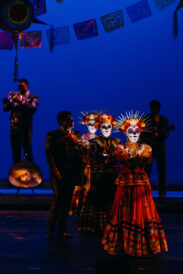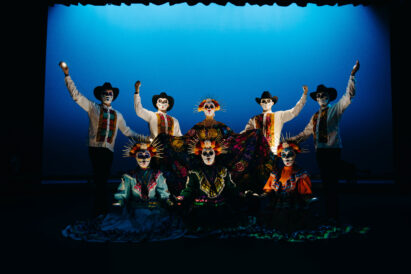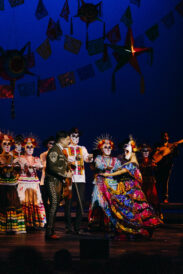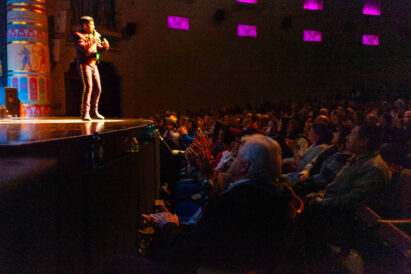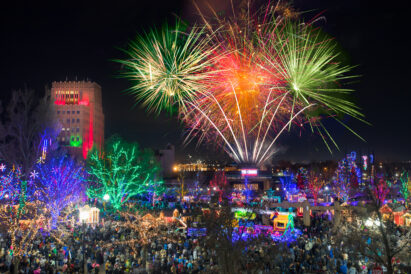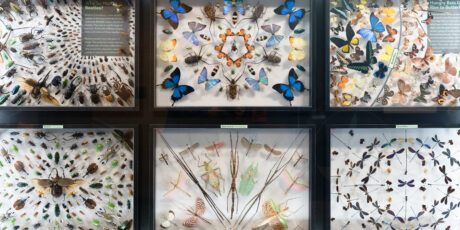Celebrating ancestors: Dia de los Muertos presents a much different perspective on death than Halloween
- Dancers and musicians perform in Eternamente: A Día de los Muertos Spectacular.
- Dancers and musicians perform in Eternamente: A Día de los Muertos Spectacular.
- Dancers and musicians perform in Eternamente: A Día de los Muertos Spectacular.
- Dancers and musicians perform in Eternamente: A Día de los Muertos Spectacular.
- Spectators enjoy a mariachi show.
- Spectators enjoy a mariachi show.
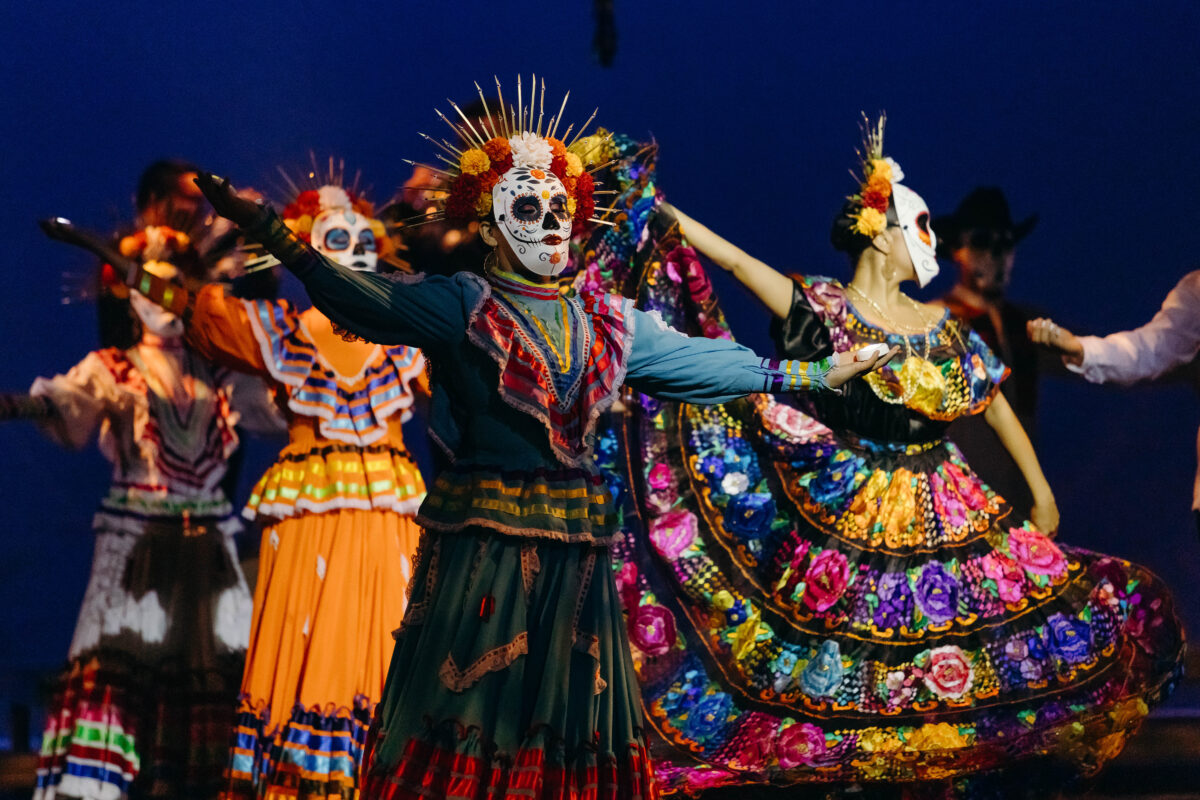
Courtesy Marian Liebowitz, Artist Management
Dancers and musicians perform in Eternamente: A Día de los Muertos Spectacular.
Many Utahns may be coming down off a sugar high today after all the trick-or-treating and partying that goes with Halloween.
But Nov. 1 marks the beginning of another holiday that is significant to many as well, one that on it’s surface may appear to be similar to Halloween but is actually much different.
That holiday is Dia de Muertos (or Dia de los Muertos), one that has historical roots in Catholic and indigenous traditions. While most recognized as being a Mexican holiday, it is also celebrated in other Latin American countries and has become a part of modern American culture for many as well (especially after the Pixar movie Coco came out in 2017).
What is Dia de los Muertos?
According to the website http://DayoftheDead.Holiday, the holiday is unique in how it looks at both life and death.
“Day of the Dead (Dia De Los Muertos) is a two day holiday that reunites the living and dead,” the website says. “Families create ofrendas (Offerings) to honor their departed family members that have passed. These altars are decorated with bright yellow marigold flowers, photos of the departed, and the favorite foods and drinks of the one being honored. The offerings are believed to encourage visits from the land of the dead as the departed souls hear their prayers, smell their foods and join in the celebrations!”
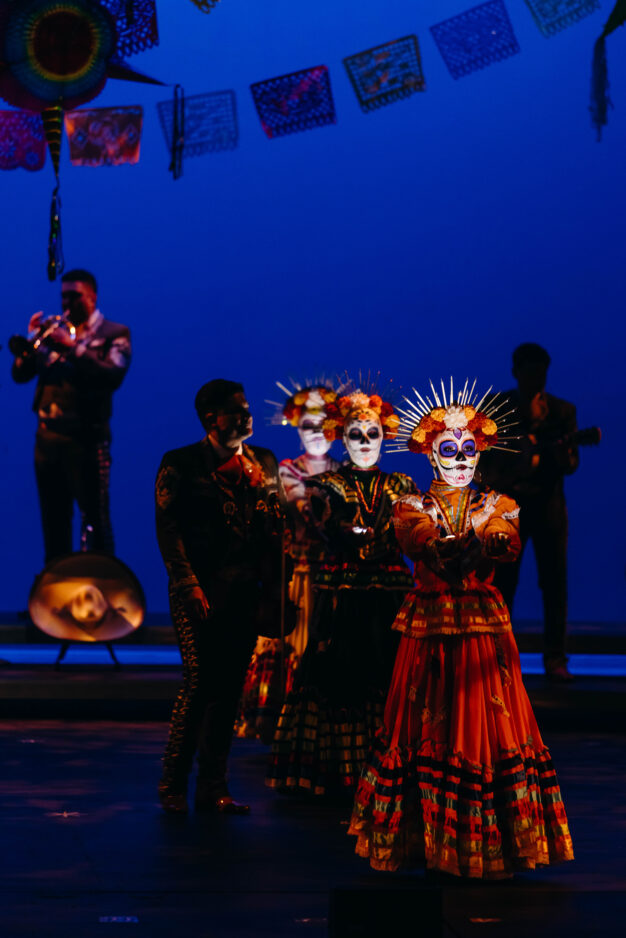
Courtesy Marian Liebowitz, Artist Management
Dancers and musicians perform in Eternamente: A Día de los Muertos Spectacular.
The website explains that the holiday has three parts:
Dia de los Angelitos (Spirits of the children)
“Dia de los Angelitos (Day of the little angels) starts the holiday at midnight on Nov 1st, where the spirits of all deceased children are believed to be reunited with their families for 24 hours,” the website says. “Families construct an altar, known as an ofrenda, with the departed child’s favorite snacks, candies, toys, and photographs to encourage a visit from their departed children. The names of the departed children will often be written on a sugar skull.”
Día de los Difuntos (Spirits of the adults)
“At midnight of the following day (November 2nd), the celebrations shift to honor the lives of the departed adults,” the website says. “The night is filled with laughter and fun memories, much like the night before. However, the Ofrendas take on a more adult-like theme with tequila, pan de muerto, mezcal, pulque and jars of Atole. Families will also play games together, reminisce about their loved ones, and dance while the village band plays in their town.”
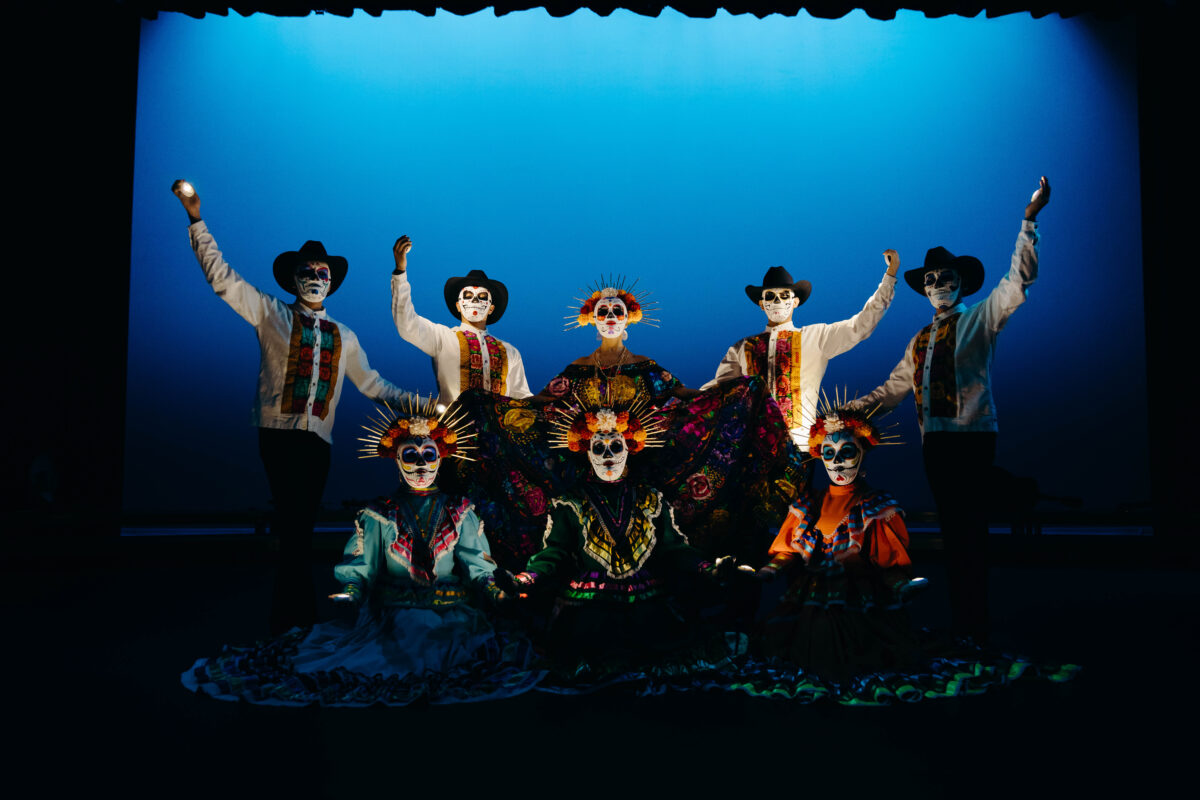
Courtesy Marian Liebowitz, Artist Management
Dancers and musicians perform in Eternamente: A Día de los Muertos Spectacular.
Día de los Muertos (Spirits of all the dead)
“The next day is the grand finale and public celebration of Dia de Muertos,” the website says. “In more recent times, people come together in their cities, dressed up with Calavera painted faces (Skeletons) and have parades in the streets. Cemetery visits are also common on the last day as families will go to decorate the grave sites with Marigold flowers, gifts, and sugar skulls with the departed’s name on them. It’s customary to clean the grave stone and restore the color.”
The creators of the website made a special point to emphasize that the holiday is about joy, not sorrow, saying: “Many of us see death as a sad event but those who celebrate Day of the Dead view death as a welcomed part of life. That is why you will see brightly colored skeletons and skulls everywhere during the holiday. They often are seen smiling, as a friendly nod to death, even mocking death. This view of death began way back during the one month Aztec festival where they celebrated the dead and paid homage to the lady of death, Mictlancíhuatl, who protected their departed loved ones and helped them in the afterlife.”
How is the holiday celebrated in Utah?
There are a variety of Dia de los Muertos celebrations in the Norther Utah and Utah Valley areas (see sidebar) and the numbers continue to increase.
One show that highlights the music and pageantry of the holiday is Eternamente: A Día de los Muertos Spectacular, which is being put on by Onstage Ogden at Peery’s Egyptian Theater in Ogden on Saturday night.

Courtesy Marian Liebowitz, Artist Management
Dancers and musicians perform in Eternamente: A Día de los Muertos Spectacular.
“It’s a pretty big production,” Onstage Ogden executive director James Fredrick said in a phone interview earlier this week..” I think we’re going to have 31 people on tour with them, which is going to be one of our largest shows of the year. This is a company that is two companies, with Mariachi Garibaldi de Jaime Cuéllar and Ballet Folklórico del Rio Grande on stage together.”
The show has been performed in other parts of Utah but Ogden gets to be the location that hosts it on the actual holiday.
“So much of concert booking is a little bit of luck of the draw,” Fredrick said. “That we actually landed it for Nov. 1, I’m not going to say there was some grand scheme there to make it happen. We kind of like lucked into it. They’re driving up and down I-15 before and after us, and it just so happened that we landed on Nov. 1.”
He said he’s looking forward to being part of an amazing show and celebration.
“There will be big dresses and a big band,” Fredrick said. “This is a thing I’ve gotten to see grow and learn a little bit about over the last three to four years. I didn’t really understand the spectacle I was going through the first few times but now it’s become one of the most enjoyable things I do every year.
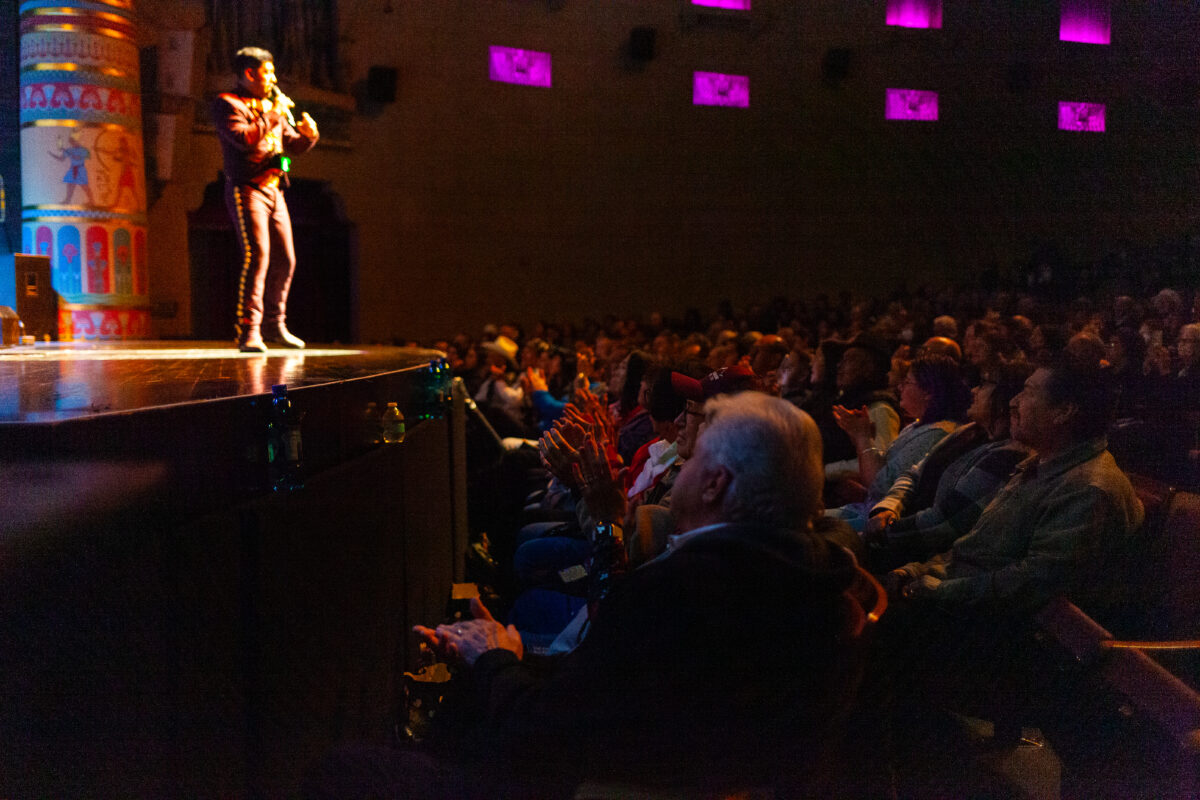
Courtesy Christina Huerta, Oh Snap!, L.L.C.
Spectators enjoy a mariachi show.
“The audience is just so hungry for it. One of our most successful show last year was Ballet Folklórico de México and by the time the first note hit of every tune last year, the audience was standing and get ready to sing along. We’re going to see that again Saturday night. It’s just kind of like a spectacle on stage and then there’s the spectacle of the entire night with the audience and the artists all getting together to celebrate.”
For tickets or more information on the show, go to onstageogden.org.
Other Dia de los Muertos celebrations
Dia de los Muertos, Ogden Main Library
Nov. 3, 6:30 p.m.
From the website: “Visit the library to learn about Día de los Muertos through activities, crafts, and stories in English and Spanish.”
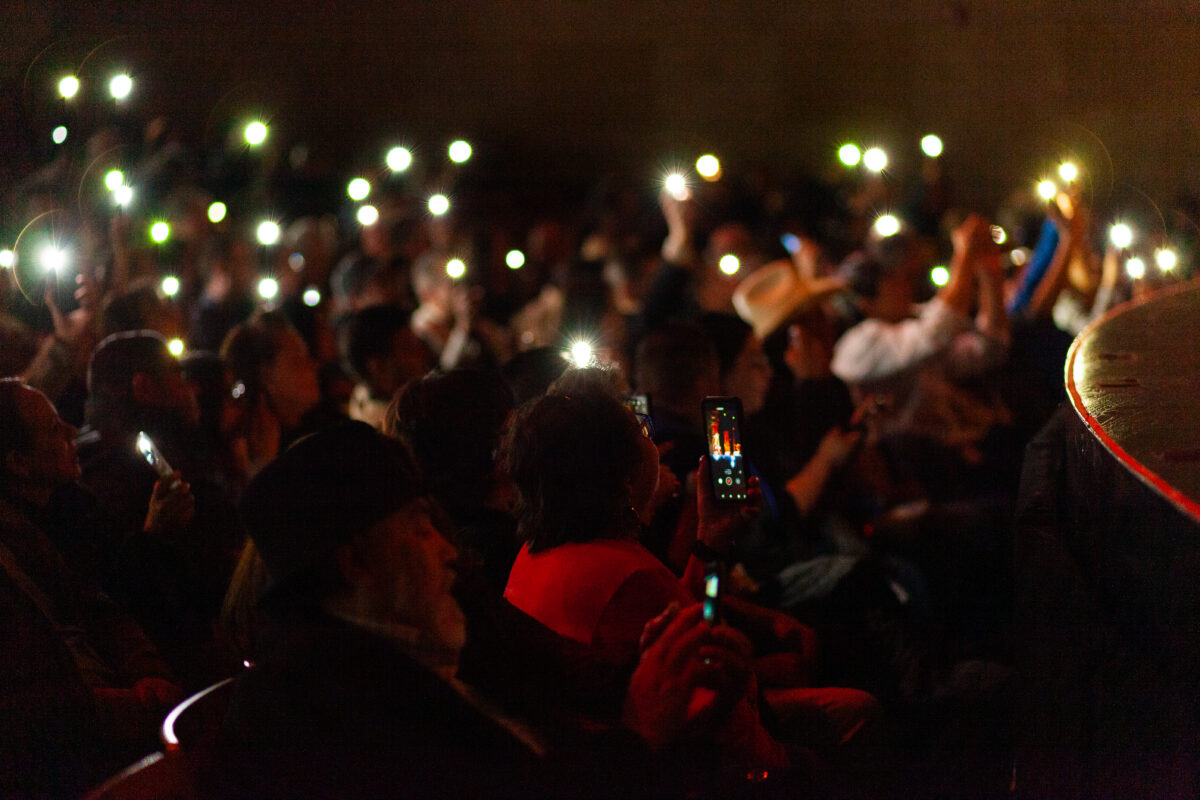
Courtesy Christina Huerta, Oh Snap!, L.L.C.
Spectators enjoy a mariachi show.
For more information, go to weberpl.events.mylibrary.digital.
BYU Día de los Muertos celebration
In addition to having ofrendas at multiple locations on campus, BYU will have musical performances and activities on Nov. 1 at the College of Humanities (6-7 p.m.) and the Museum of People and Cultures (7-9 p.m.).
For more information, go to kennedy.byu.edu.
Dia de Muertos con Elevate, Orem Public Library
Nov. 1, 10 a.m.-1 p.m.
From the website: “Día de los Muertos, or Day of the Dead, is a time of remembrance for loved ones who have passed on. Celebrate with us this year through Mexican music, art, dance, activities, food and prizes.”
For more information, go to library.orem.gov.
Dia de los Muertos, Springville Library’
Nov. 1, 10:30 a.m.-2 p.m.
From the website: “Celebra el dia de los Muertos en la bibioteca de Springville!”
For more information, go to springville.org/library.


